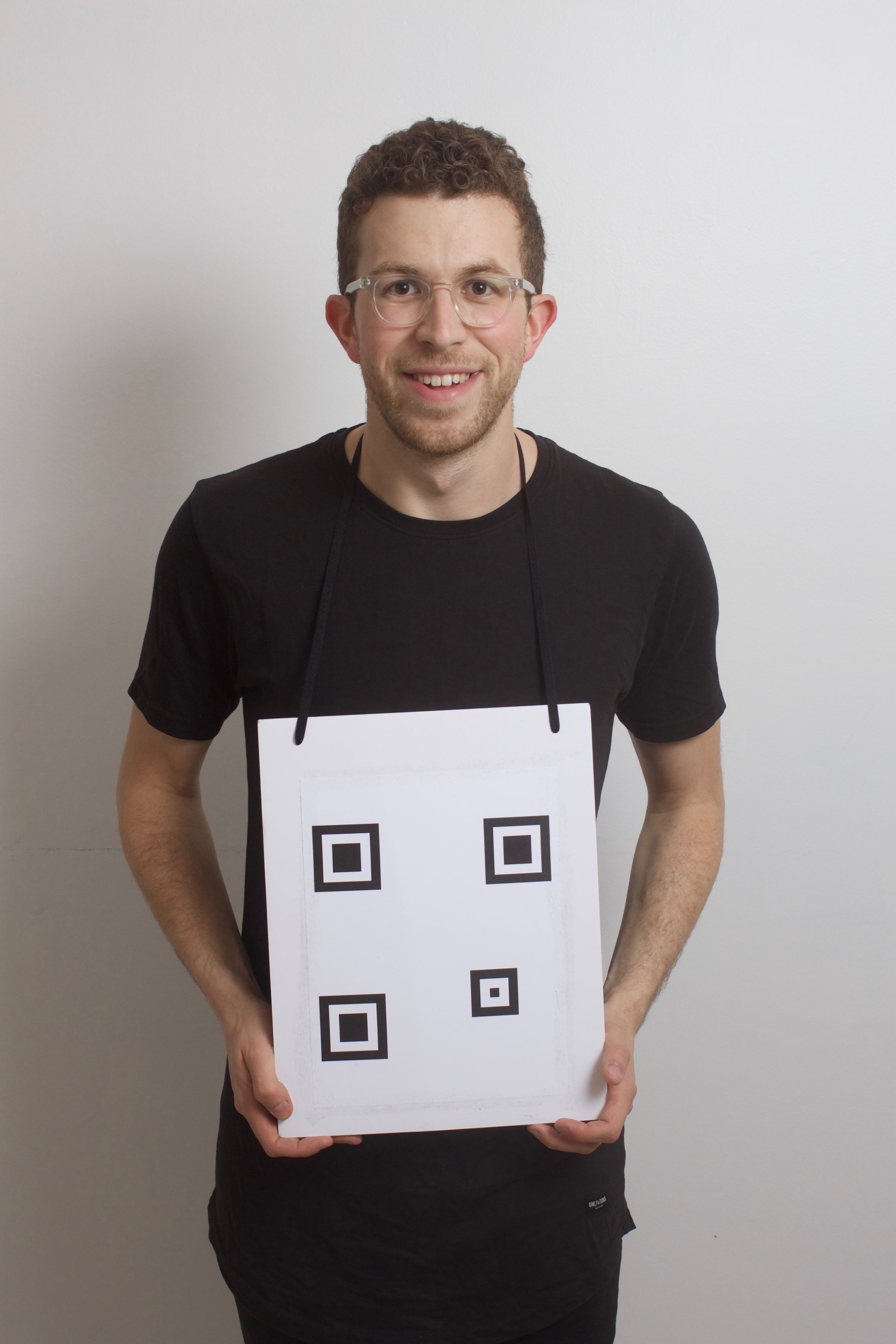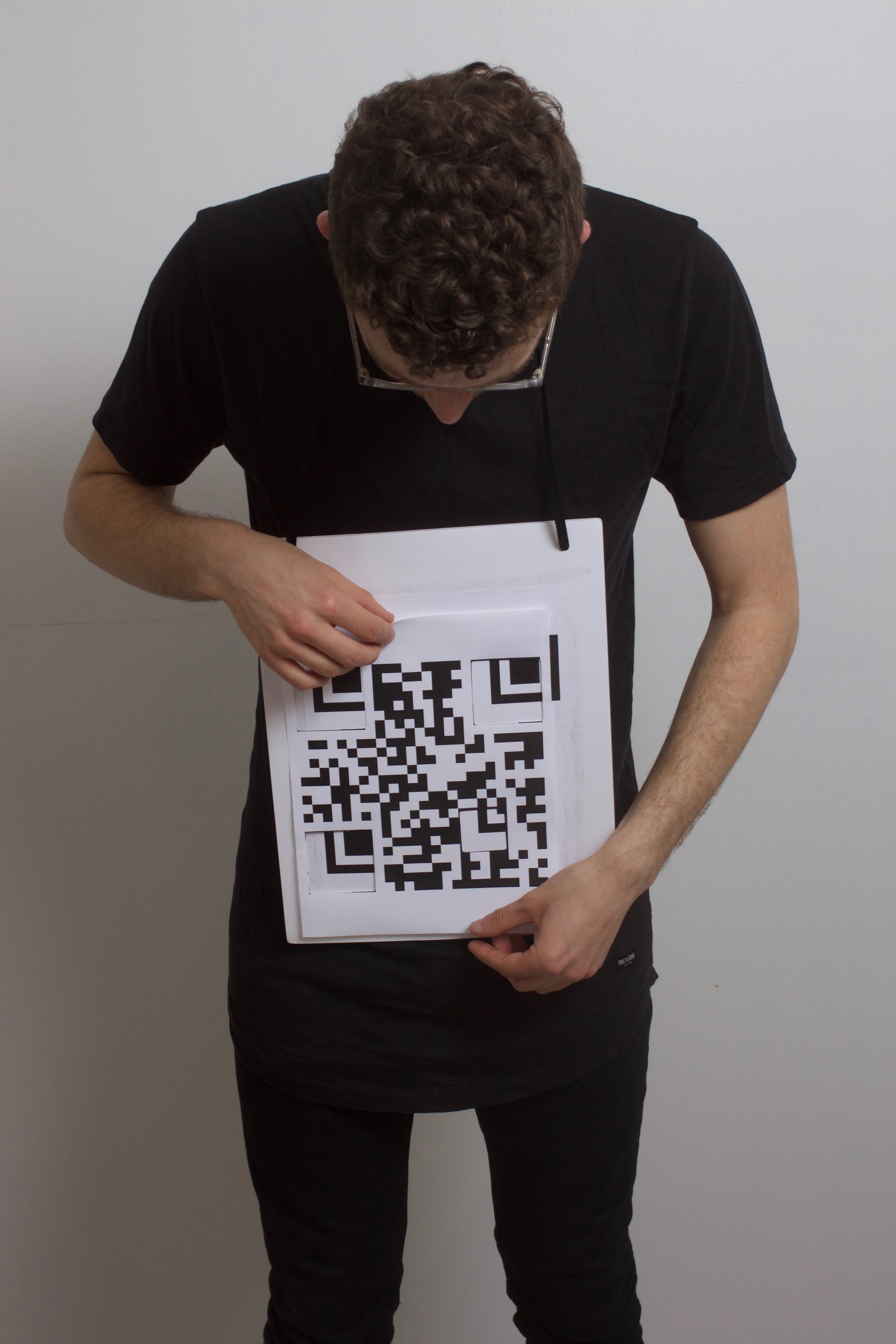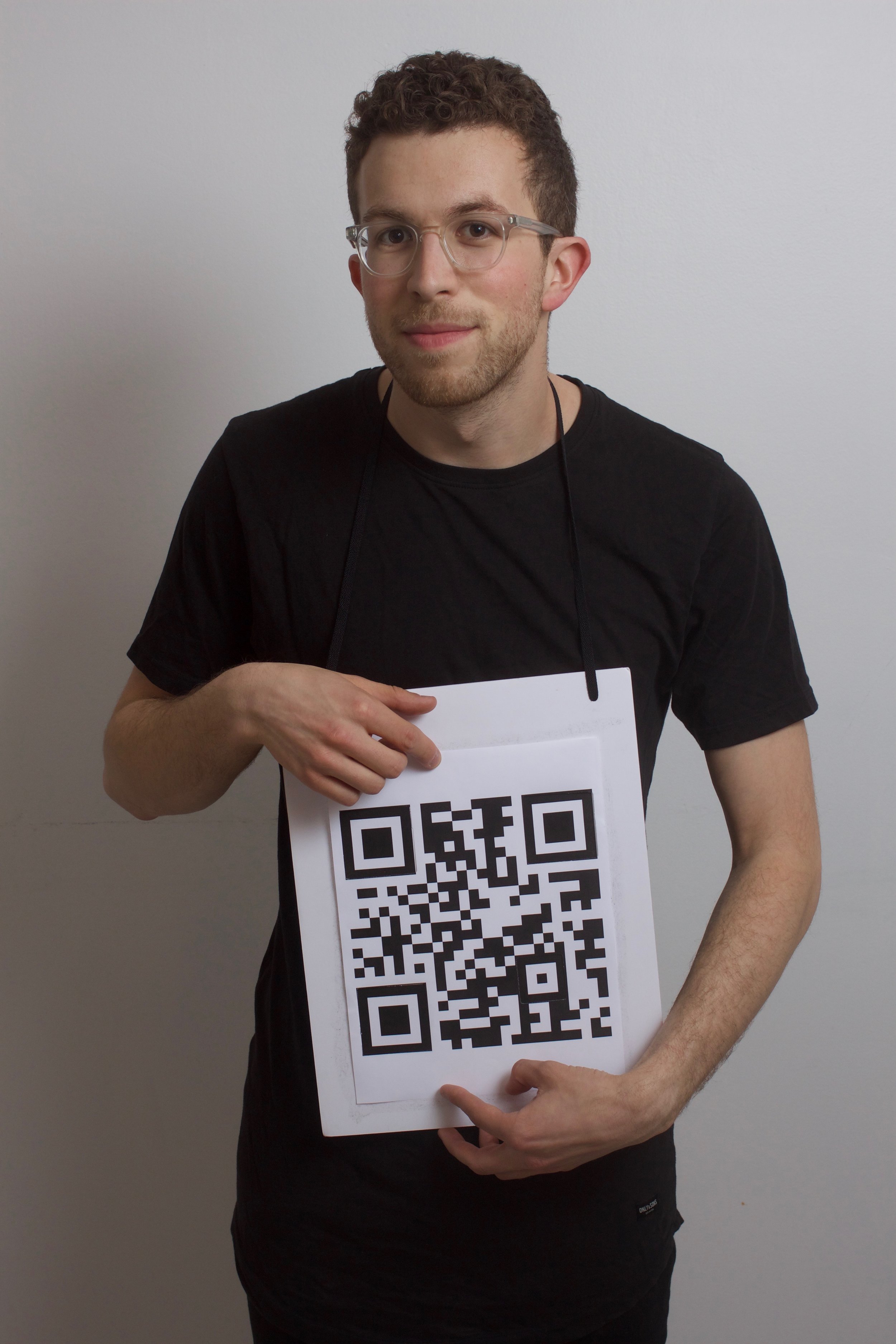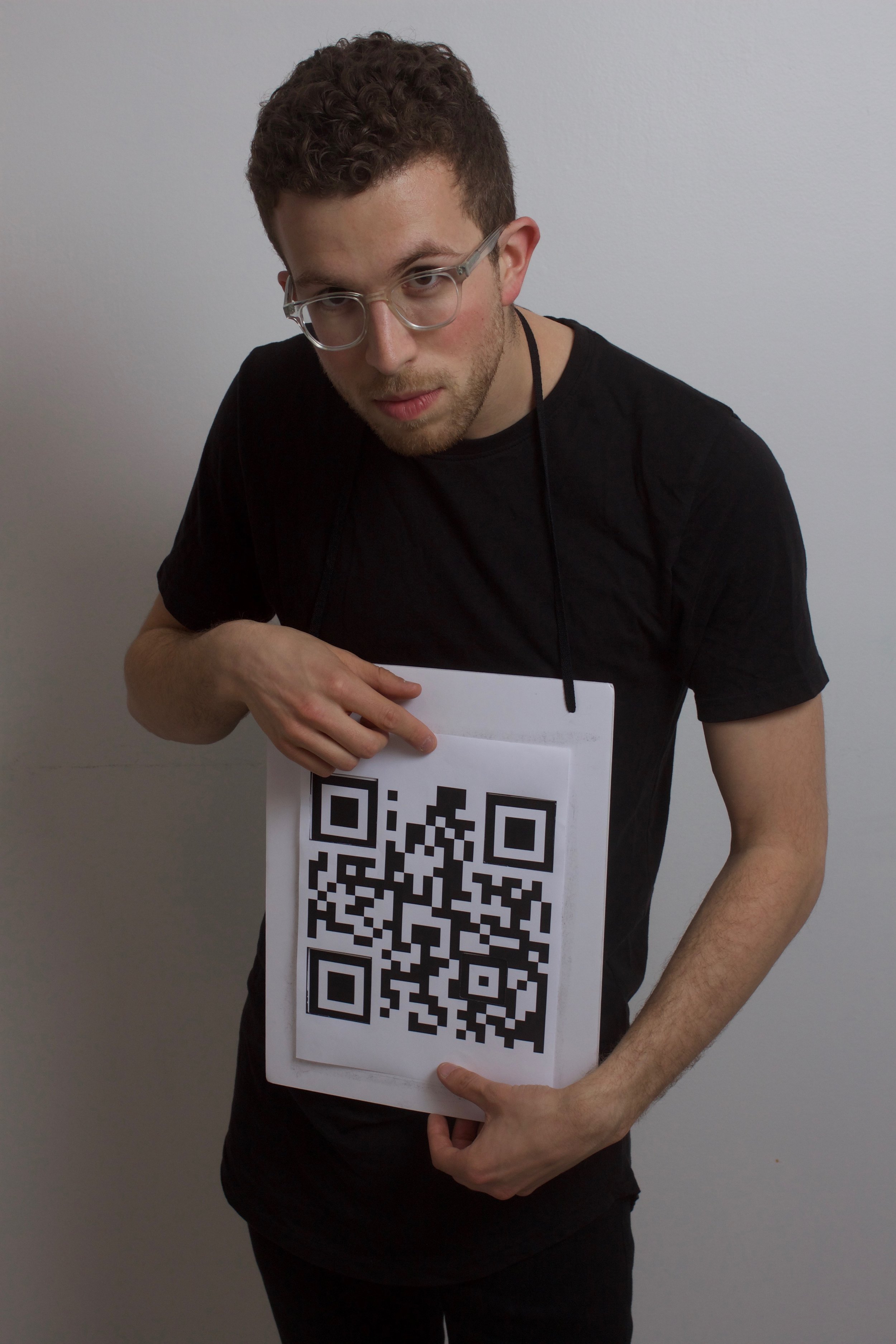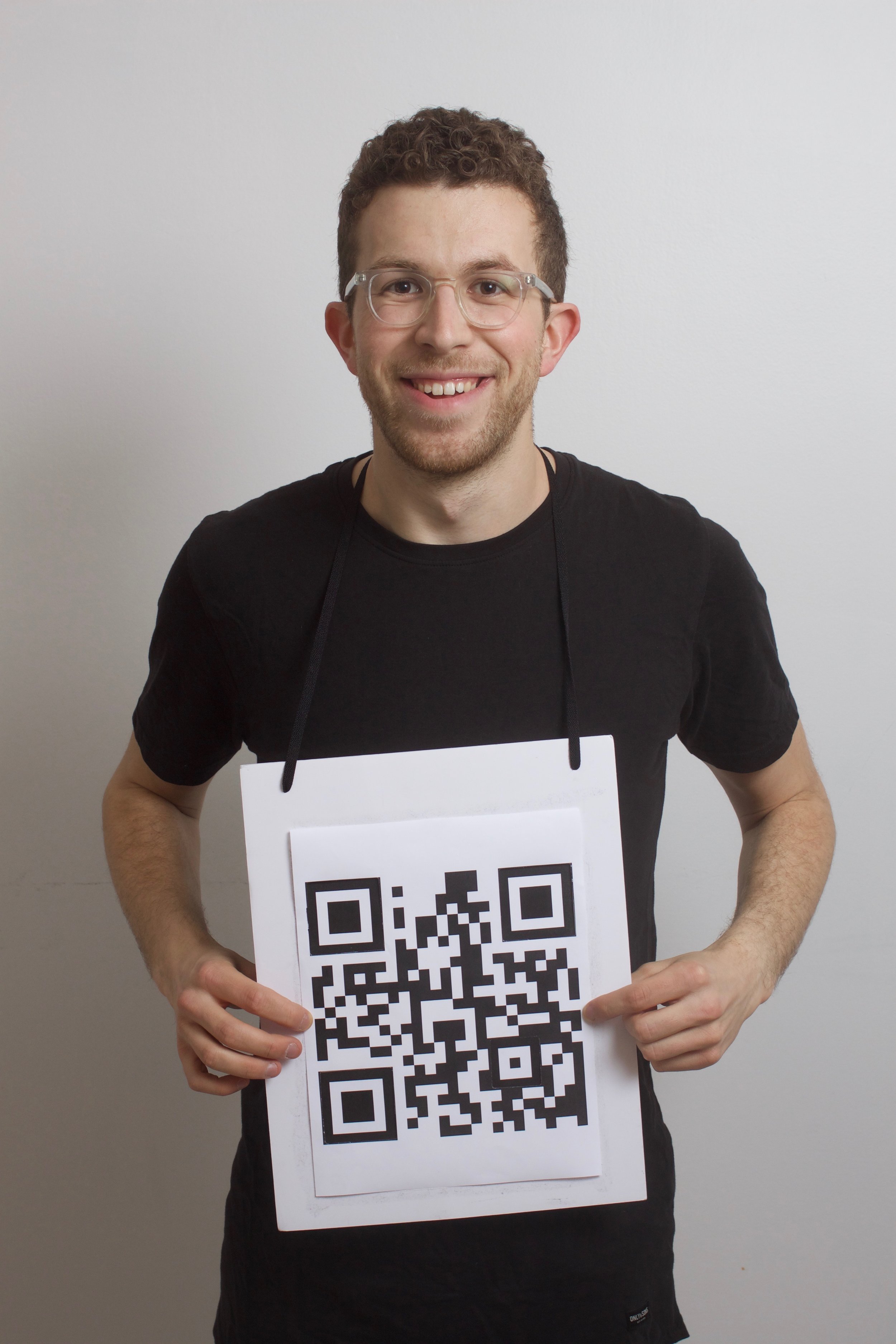What Are You?
2017
On Purim, the Jewish holiday known for masquerading, anyone who isn’t wearing the most self-explanatory costume is asked “what are you?” Throughout the night, “what are you?” becomes the basic greeting substituted for “hello.” So this year, I blurred costume and identity by using QR codes to provide a variety of randomized identities to that question of “what are you?”
I was dressed in black, with a blank white square on my chest that only had the QR code’s position and orientation dots. When asked what I was, I would randomly select one page from my folder of 50 QR codes, each representing a different costume. The pages in my folder had their orientation and position dots removed, and I would place them up against the other part of my QR code that I was already wearing. For every person that asked me the question, “what are you?” I became disguised as a different thing. To one person I was the distinguished Notorious R.B.G., to another a roaring lion, and to a third the imposing Statue of Liberty.
Alone, each part of the costume was impossible to understand. The orientation and position dots of the code couldn’t be scanned without the data bits, and conversely, the data bits of the code couldn’t be scanned without the orientation and position dots. The anchor and the information needed to be present simultaneously; apart they were both meaningless.
With this costume I was a shapeshifter. I was all the costumes in my folder at once. Only when I was asked “what are you?” and I choose a costume I became something for a second. As I removed the bits I faded back into uncertainty. My identity was a manifestation of the quantum. I was all the costumes simultaneously but when people tried to observe those costumes I definitively became only one.
I too was an observer to my identity. I didn’t label the QR codes in my folder, so while I knew the scope of my possible costume states, I had no idea which one I would be at a given moment. When the other participant determined my costume and told me what I was for that moment, I was just another viewer getting a glimpse of my coalesced identity.
One the one hand, I would like to say that my work enabled me to embody quantum uncertainty. I was a quantum element — a wave as I was a range of possible identities and a particle as I was viewed in one costume. But now, when I reflect, in the physical world I was certainly never any of the things encoded in the QR code. I was merely a person holding a cardboard sign where I could rapidly change the information. By using the proper technology the viewer could interpret the QR code and I could virtually become the object the code signified. The virtual overlay tried to convince the viewer of its totality, “of course she is the Statue of Liberty, that’s what my phone said, with no ambiguity.” However, I clearly was not the Statue of Liberty. The QR code and its representation of reality was bullshit.
I am curious to explore what other subtler forms of this delusion we are imposing on our lives as we increasingly view the world through our virtualizing digital devices. Why should I wear a fitness tracker to quantify my body’s actions? Why are likes/comments/shares a meaningful indicator of engagement on digital communication? What lies are we telling ourselves when we look through these devices? If we take a second and actually look, what deceptions will we expose? Does this virtual sheen imposed on the world affect our physical reality?
Many thanks to Tali Marcus for this idea and the encouragement to pursue it.
